![]()
![]()
![]()
Use LEFT and RIGHT arrow keys to navigate between flashcards;
Use UP and DOWN arrow keys to flip the card;
H to show hint;
A reads text to speech;
80 Cards in this Set
- Front
- Back
|
Growth stage infant birth to 2 years |
Neurons in the brain form new connections( transient exuberance) |
|
|
Stand |
10 months |
|
|
Walk unassisted |
12 months |
|
|
Learn to kick a ball between |
20-24 months |
|
|
When does sensory and perceptual capabilities develop |
Infant birth to 2 years |
|
|
Binocular vision develops by |
14 weeks |
|
|
Color vision develops in |
1 month |
|
|
At what age infants can track a slow moving objects |
2 months |
|
|
By how much months they can track faster objects |
5 months |
|
|
At what age body proportions are similar to those of adults |
Age 6 preschool 3-6 yrs |
|
|
At what age the brain is 90% of adult size |
By age 5 and by age 7 its fully grown |
|
|
Fine motor skills improve as nerves become myelinated. Patience to practice. |
Pre school 3-6 |
|
|
Boys and girls are about equal in physical abilities |
School age 6 to 12 |
|
|
School age children can master almost any motor skill that does not require adult strength or judgement |
School age 6 to 12 |
|
|
Growth slow |
School age 6 to 12 yrs |
|
|
Conservation happens in |
The concrete operational stage |
|
|
Menstruation in females usually begins in at around |
Age 12 or 3 yrs earlier or later in adolescent |
|
|
Height typically does not increase but young adults are typically the strongest and the healthiest they will be in life |
Young adult 18 to 24 |
|
|
Body systems become less efficient homeostasis takes longer to reach |
Young adult |
|
|
Wrinkles, hair thins and fat increases |
Middle adult 40-60 |
|
|
Hearing gradually becomes less acute |
Middle adult 40-65 |
|
|
80% of 35yrs old will survive to age 65 |
Middle adult |
|
|
At menopause women stop menstruating. Ovulation ceases and estrogen levels decrease |
Middle adult 40-65 |
|
|
Sexual activity tends to decline but it continues |
Middle adult age 40-65 |
|
|
People become about one inch shorter than they were in early adult hood |
Middle adult 40-65 |
|
|
Over age 65, 10% see well without Glasses, 80% need Glasses, and 10%have visual difficulties even with glasses |
Older adult 65yrs and older |
|
|
Age related hearing loss afflicts about |
40% of people over 65. Older adult 65 |
|
|
(1896-1980) was a biologist who originally studied mollusks |
Jean piaget |
|
|
Achieves object performance and differentiates self from objects |
Sensori-motor birth 2yrs |
|
|
Thinking is still egocentric and uses language to represent objects by images and words. Classifies objects by a single feature. |
Pre-operational 2-7yrs |
|
|
Can think logically about objects and events achieves conservation of numbers. Classifies objects according to several features. |
Concrete operational |
|
|
Can think logically about about abstract propositions and test hypotheses |
Formal operation |
|
|
Learning to trust is psychosocial development |
Infant birth to 1 yr |
|
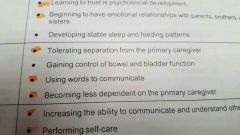
|
Toddler |
|
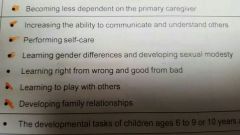
|
Pre school |
|
|
Developing a conscience and morals |
School age 6 to 12 |
|
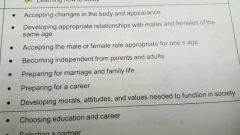
|
Adolescent 12 to 18 yrs |
|
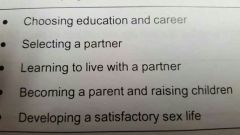
|
Young adult |
|
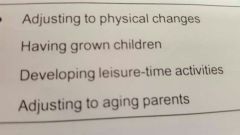
|
Middle adult 40 to 65yrs |
|
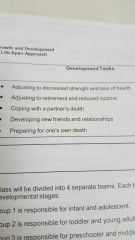
|
Late adult |
|
|
Sigmund freud 1856-1939 Is considered to be the father of |
Modern western psychology |
|
|
He was a neurologist who taught at the University of vienna |
Sigmund freud |
|
|
Pleasure principal |
Id |
|
|
Primary process thinking |
Id |
|
|
Id impulses are moderated by the |
Ego |
|
|
The ego operates primarily in the conscious mind |
The ego |
|
|
Operates under the reality principle |
The ego |
|
|
The superego operates partly in the conscious mind |
The superego |
|
|
It is an outgrowth of our learned moral values and is often referred to as our conscience. It imposes guilt |
The superego |
|
|
Myers Briggs was associated with |
Carl Jung |
|
|
Most widely used personality instrument in the world |
Kersey temperament sorter |
|
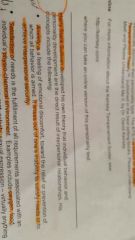
|
Interpersonal theory Sullivan |
|
|
Sullivan interpersonal theory |
Anxiety |
|
|
Learning to form satisfactory peer relationships |
Juvenile 6-9yrs |
|
|
initiating feelings of affection for another person |
9-12 pre-adolescence |
|
|
Developing sense of identity |
Early adolescence 12-14yrs |
|
|
Establishing self-identity; experiencing satisfying relationship; working to develop a lasting, intimate opposite sexy relationship |
Late adolescence 14-21yrs |
|
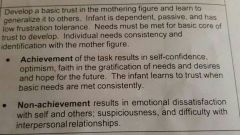
|
Birth to 18 months- trust vs. Mistrust |
|
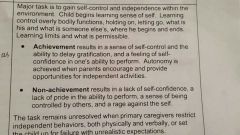
Autonomy vs shame and doubt |
18 months- 3 yrs |
|

|
3-6yrs initiative vs guilt |
|

|
Industry vs inferiority 6-12yrs |
|

|
Identity vs role confusion |
|
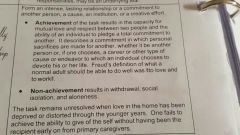
|
Intimacy vs isolation 20-30yrs |
|
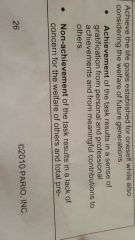
|
Generative you vs stagnation 30-65yrs |
|
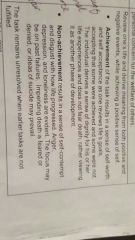
|
Ego integrity vs despair 65 yrs to death |
|
|
Relevant to psychiatric care in that it incorporates sociology cultural concepts into development of personality |
Erikson |
|
|
A theory that is still popular and is used today |
Behavior theory skinner and pavlov |
|
|
All mental health problems are the result of learned Malad active behavior |
Believe Behaviorist |
|
|
Scientist associated with stimulus response model |
Pavlov |
|
|
Specific strategies utilized included token economies, biofeedback, systematic desensitization and aversion therapy |
Behavior therapy |
|
|
rely on scientific method to demonstrate the validity of their work |
Behaviorist |
|
|
Experiments involved dogs |
Pavlov |
|
|
Founder of cognitive theory(thoughts) |
Albert ellis |
|
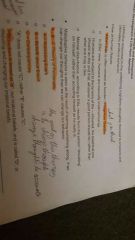
|
Albert Ellis |
|
|
Has deep philosophical roots dating back hundreds of yrs |
Humanistic theory Rogers and Maslow |
|
|
view people as worthwhile beings who have an inherent capacity for growth and positive self direction in life |
Humanist |
|
|
Is viewed as the blocking of personal growth |
Psychopathology |
|
|
Choices and finding meaning |
Existential |
|
|
Based on how your past attachments were your future attachments will be |
Physiological processes |
|
|
Which theory is similar to Erickson because it goes through entire life span |
Personality development |

